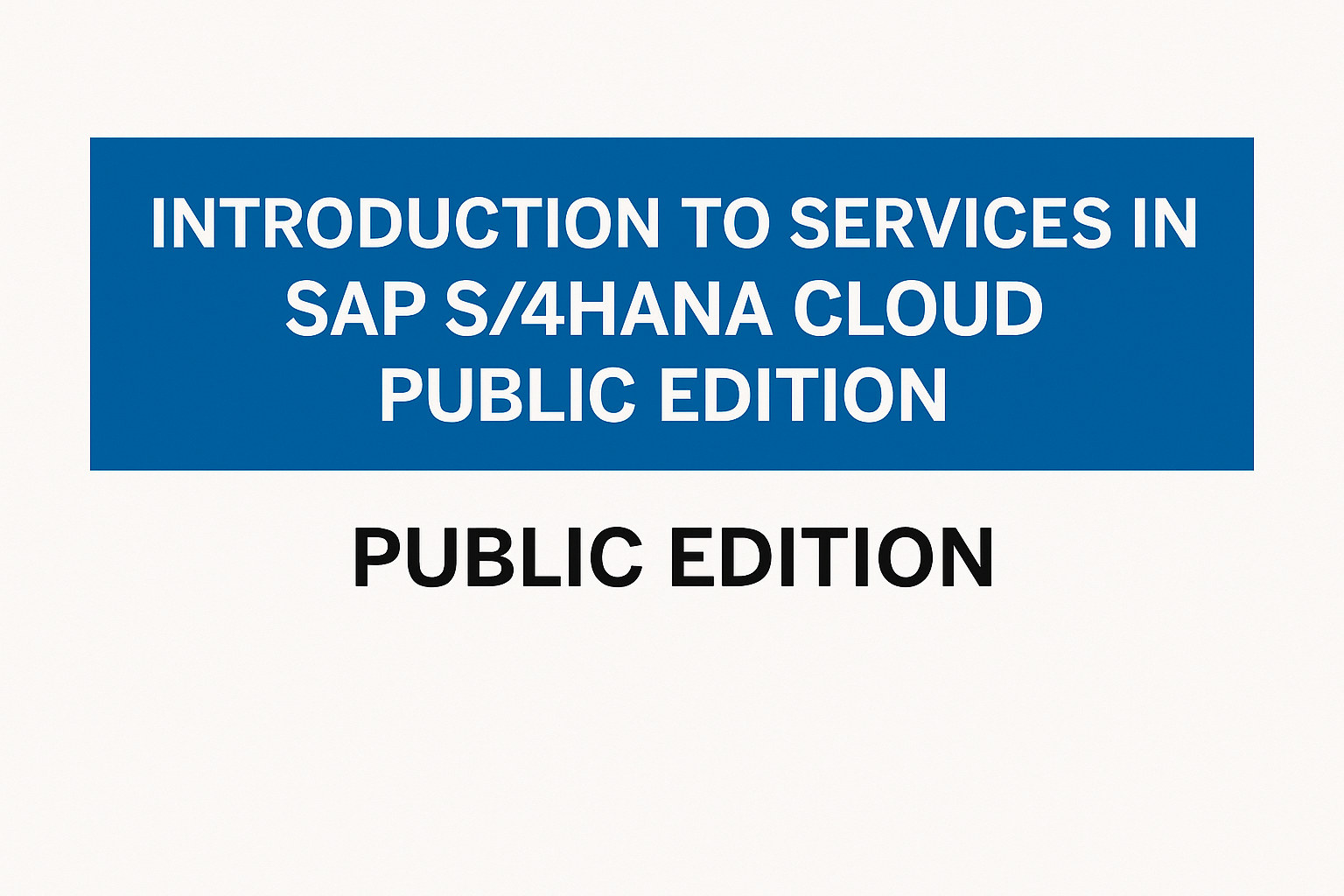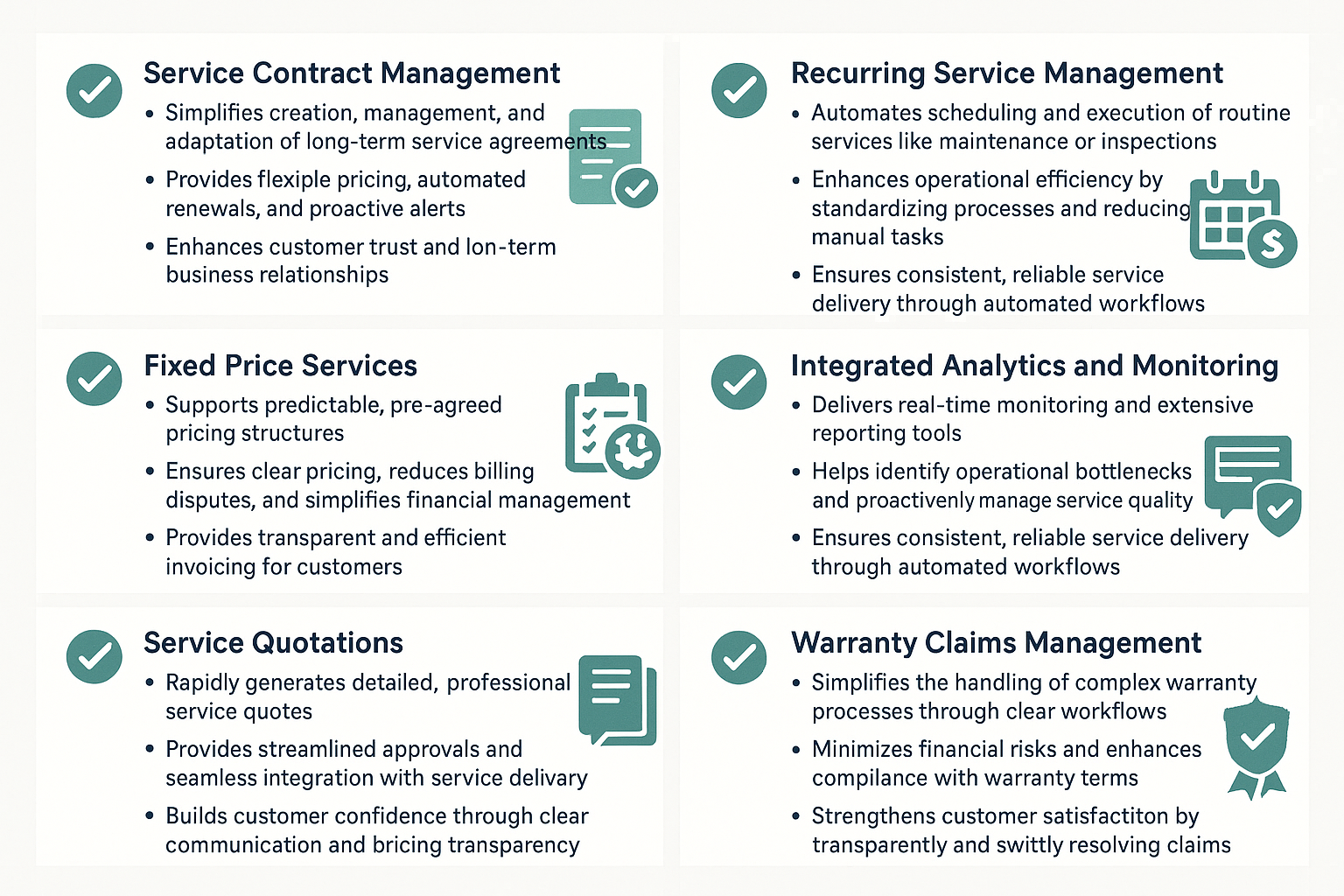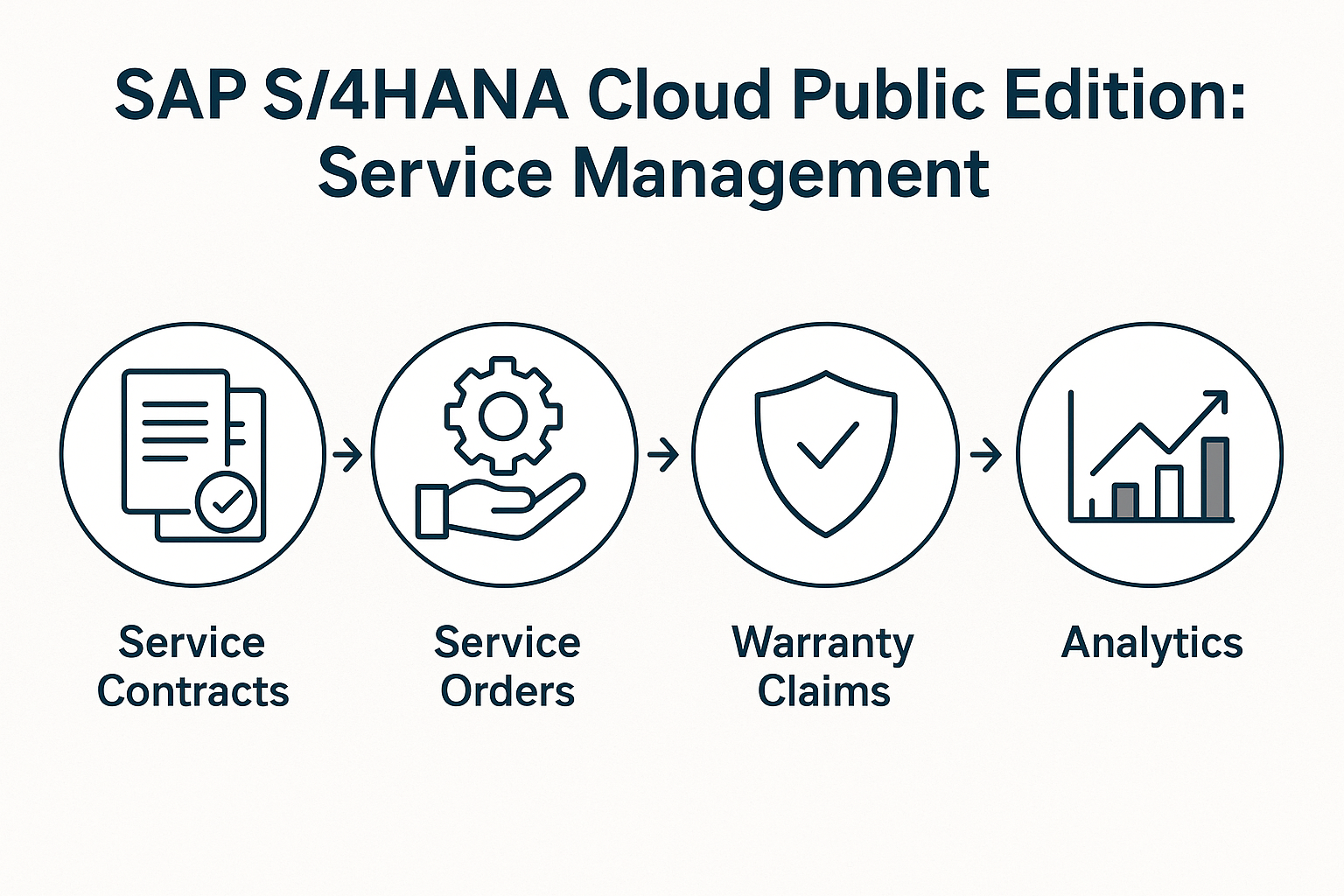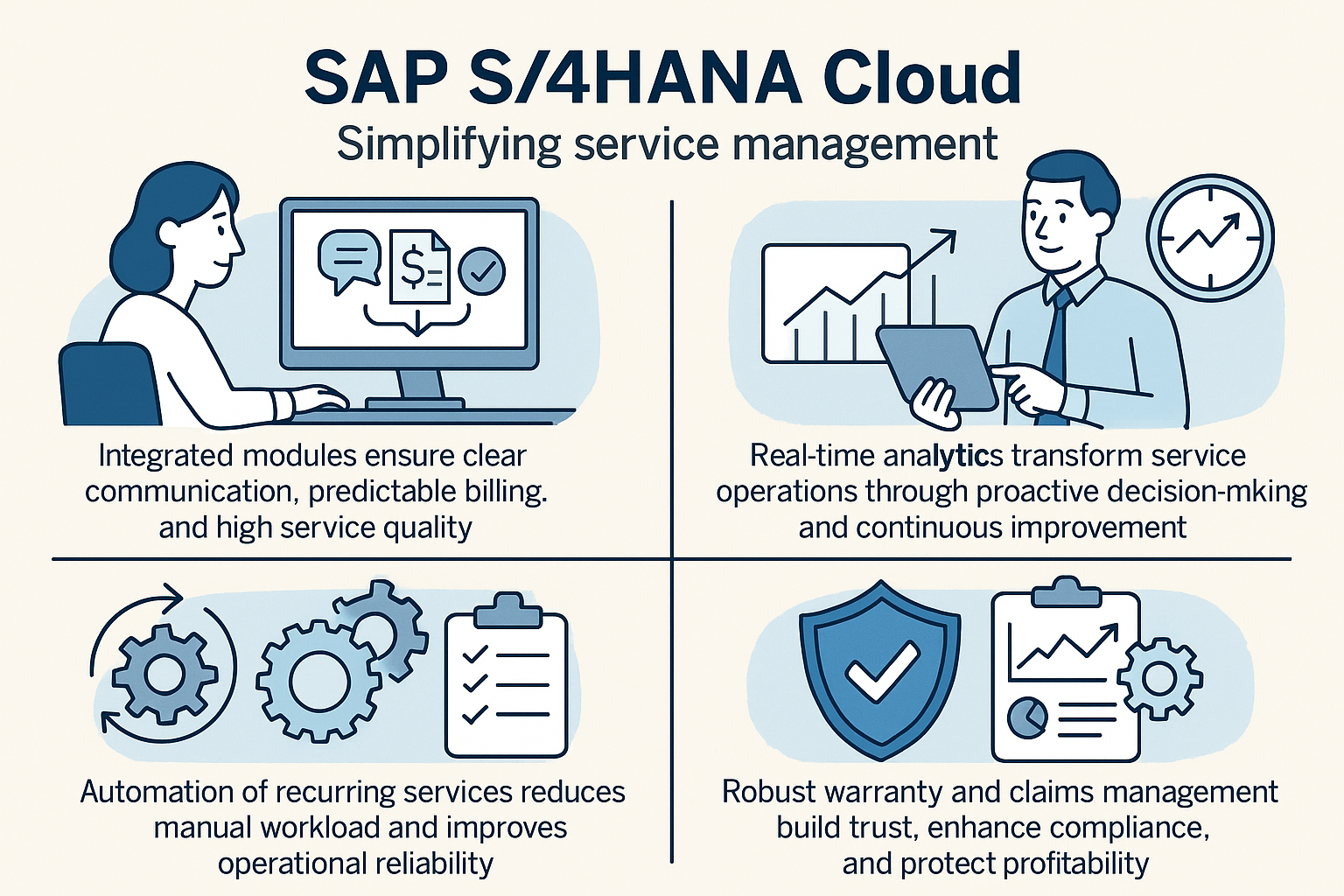Lesson Title: Introduction to Service Management in SAP S/4HANA Cloud

Lesson Description:
In this lesson, you’ll explore the robust and integrated service management capabilities of SAP S/4HANA Cloud Public Edition. You’ll learn how SAP’s cloud-based services streamline critical business operations like customer relationships, service contracts, service orders, warranties, and analytics.

Lesson Learning Objectives:
-
Understand key service management functionalities provided by SAP S/4HANA Cloud.
-
Identify how integrated service management tools enhance operational efficiency and customer satisfaction.
-
Recognize practical ways SAP S/4HANA Cloud improves service lifecycle management from contracts to analytics.
Lesson Key Points:

✅ Service Contract Management:
-
Simplifies creation, management, and adaptation of long-term service agreements.
-
Provides flexible pricing, automated renewals, and proactive alerts.
-
Enhances customer trust and long-term business relationships.
✅ Fixed Price Services:
-
Supports predictable, pre-agreed pricing structures.
-
Ensures clear pricing, reduces billing disputes, and simplifies financial management.
-
Provides transparent and efficient invoicing for customers.
✅ Service Order Management:
-
Oversees the entire service order lifecycle—from creation and resource allocation to delivery and invoicing.
-
Includes real-time tracking and integrated analytics to optimize service operations.
-
Ensures timely, accurate, and efficient execution of service orders.
✅ Recurring Service Management:
-
Automates scheduling and execution of routine services like maintenance or inspections.
-
Enhances operational efficiency by standardizing processes and reducing manual tasks.
-
Ensures consistent, reliable service delivery through automated workflows.
✅ Service Quotations:
-
Rapidly generates detailed, professional service quotes.
-
Provides streamlined approvals and seamless integration with service delivery.
-
Builds customer confidence through clear communication and pricing transparency.
✅ Integrated Analytics and Monitoring:
-
Delivers real-time monitoring and extensive reporting tools.
-
Helps identify operational bottlenecks and proactively manage service quality.
-
Converts data into actionable insights for continuous service improvement.
✅ Warranty Claims Management:
-
Simplifies the handling of complex warranty processes through clear workflows.
-
Minimizes financial risks and enhances compliance with warranty terms.
-
Strengthens customer satisfaction by transparently and swiftly resolving claims.
Practical Example:
Imagine Apple managing warranty claims for its devices. With SAP S/4HANA Cloud, warranty claim processing becomes streamlined—allowing Apple to swiftly handle customer claims, verify warranty conditions, and promptly provide replacements or repairs. Integrated analytics offer Apple real-time visibility into claim statuses, helping maintain high customer satisfaction and manage financial risk effectively.
Lesson Summary:
SAP S/4HANA Cloud Public Edition offers comprehensive service management capabilities that streamline and integrate complex business processes. From managing detailed service contracts and executing service orders to efficiently handling warranty claims and analytics, SAP’s cloud solutions significantly boost operational effectiveness, customer loyalty, and strategic advantage in competitive markets.

Lesson Takeaways:
-
SAP S/4HANA Cloud simplifies complex service management tasks, enhancing efficiency and accuracy.
-
Integrated modules ensure clear communication, predictable billing, and high service quality.
-
Automation of recurring services reduces manual workload and improves operational reliability.
-
Real-time analytics transform service operations through proactive decision-making and continuous improvement.
-
Robust warranty and claims management build trust, enhance compliance, and protect profitability.

Reflect on how adopting SAP’s service management solutions could positively transform your organization’s customer experience, operational efficiency, and market competitiveness.